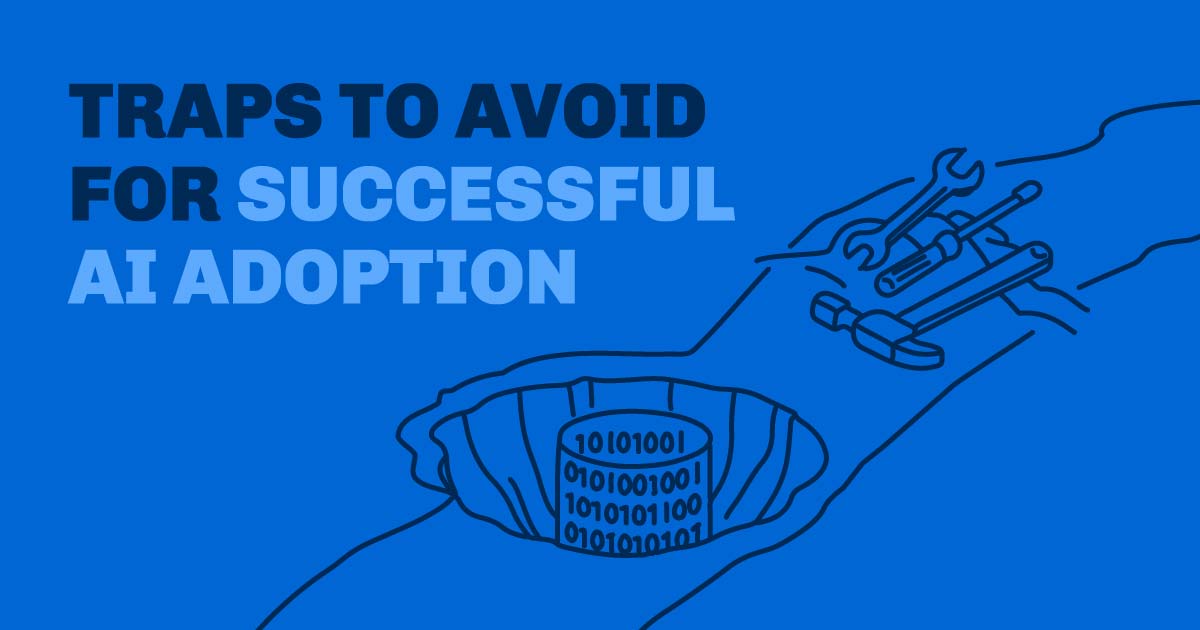
The mandate for enterprise leaders is clear: Adopt AI to gain a competitive edge. Find a high-value AI use case. Have your data ready yesterday. Gain organizational buy-in. Start generating serious returns.
It is easier said than done, and the path from idea to scalable value is where most projects fail.
Have you seen the “State of AI in Business 2025” stat that keeps circulating? According to MIT, 95 percent of GenAI pilots fail to deliver a measurable impact on the company’s profit & loss (P&L) statement. Is it keeping your board members up at night?
The mandate is now: Adopt AI and do it right. Be one of the 5 percent.
The failure is rooted in complexity and hidden costs. A recent Gartner survey found that 72 percent of CIOs reported their organizations are breaking even or losing money on AI investments.
.jpeg)
Organizations often overlook the true expense of change management, transition costs, and necessary foundational work. This leads to two core strategic mistakes.
This trap is rooted in the anxiety that you must solve every data integrity issue across the enterprise before you can deploy a single AI solution. This fear is understandable – Gartner predicts that organizations will abandon 60 percent of AI projects through 2026 because they are unsupported by AI-ready data.
You can’t dump tools on your employees and just expect them to adopt them. Deploying Copilot, Gemini, or Claude without providing the foundational knowledge or permission to play stalls a promising initiative across the organization. The issue is not the quality of the technology; it’s the quality of the adoption. Without intentional strategy, even the best tools can become shelfware. This is the hidden cost of user hesitation.
And just like that, a multi-million-dollar investment is reduced to a glorified writing assistant, its potential is leaking out at every stage.
.jpeg)
Relying on manual, high-volume processes is a missed opportunity for growth and efficiency. Companies that successfully leverage AI to create highly personalized, context-driven customer interactions can see revenue increases of 10-15 percent from these activities, according to McKinsey & Company.
What happens when your competitor uses AI to unlock business intelligence from their complex, messy data?
Your business gets stuck with high-volume, low-value work, while the competition focuses on delivering timely, relevant, and engaging interactions with prospects. The challenge is to define an accessible, incremental solution that doesn’t require a multi-year IT overhaul.
To beat the AI adoption failure rate, successful organizations don’t approach it as an IT rollout, but as a disciplined change management exercise focused on delivering immediate, proven value. They prioritize clarifying what to build before committing large budgets.
The starting line is not the data center, but the business process. Collaborate with key stakeholders across IT and business units to quickly identify, vet, and prioritize potential use cases. The criteria is simple:
This is where expert facilitation accelerates time-to-value. By bringing technical knowledge to the brainstorming process, you can immediately validate or pivot a business idea, cutting down a lengthy discovery period to days or weeks.
The solution to the "Tool Dump" is to empower users and deliver immediate value. Providing clear, structured education equips employees with the foundational skills (like prompt engineering) needed to move beyond simple tool use and grants them the permission and education to use AI as a thought partner.
This training focuses on real-world scenarios, context management, and teaching teams how to use generative AI features beyond just writing emails. Better yet, tie generative AI use back to a strategic initiative and give teams the “why” behind the change.
Instead of aiming for a full enterprise solution, focus on delivering a proof-of-concept (PoC). This is a small, functional solution built with the data you already have, no matter how messy. It generates the initial, measurable ROI needed to justify the next phase.
Once the PoC has proven value, the solution establishes a strategic roadmap for data maturity.
This phased approach allows you to incrementally build an enterprise-grade AI-ready data estate, rather than worrying about it or preparing for or paying for the wrong things.
.jpeg)
This three-phase approach is a strategic alternative to falling into the AI investment traps. By prioritizing small, proven business outcomes before committing to large-scale data projects, organizations reverse the standard failure model. You move from the uncertainty of a 95 percent pilot failure to confidently building a scalable, profitable, enterprise-grade AI future.
Read how Trility helped a national sales team effectively sort through 2,000 new leads every single day using an AI Agent by demonstrating that an AI agent could ingest complex, fragmented customer data to instantly identify the day’s top prospects. By confirming the project’s value, Trility provided the client’s leadership with a clear and targeted path to make data-driven investments in future AI solutions.